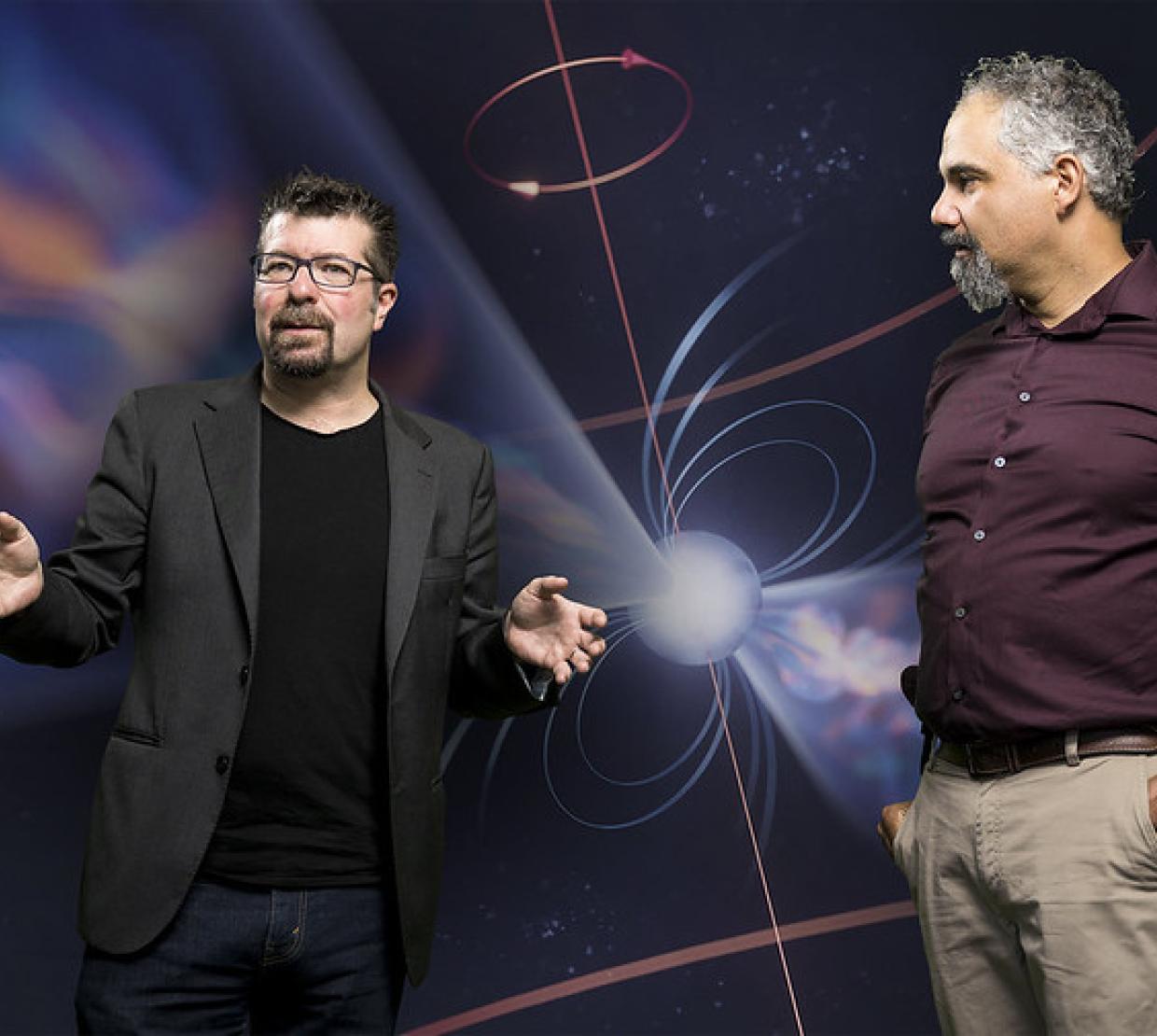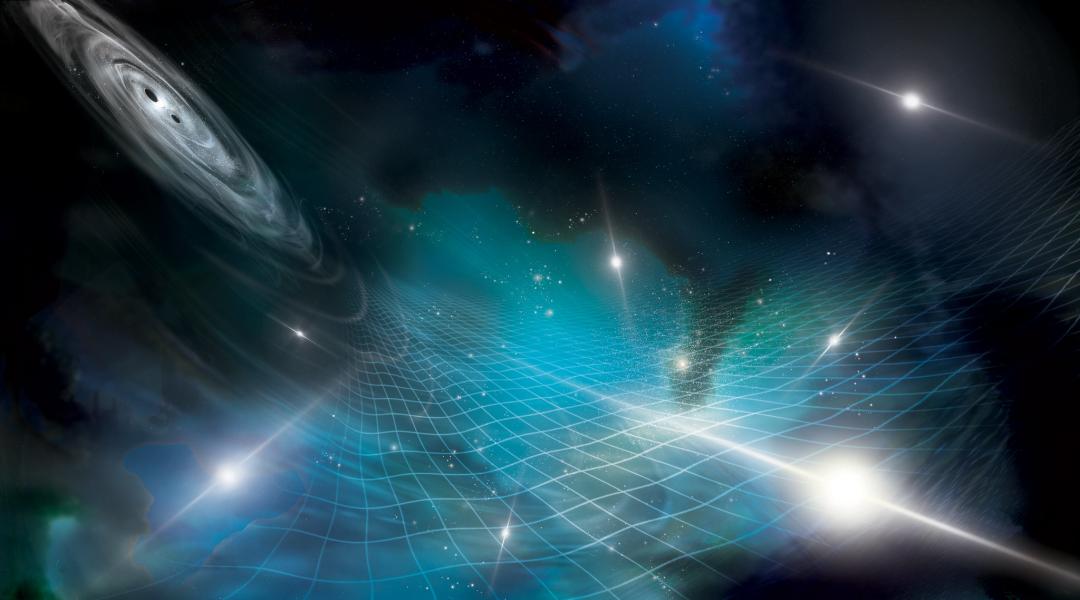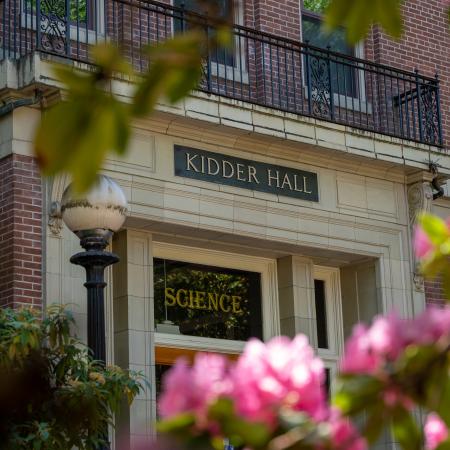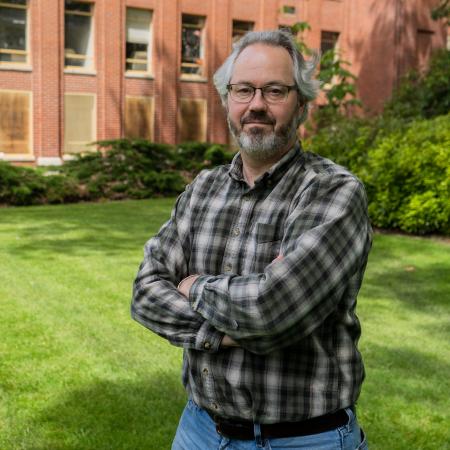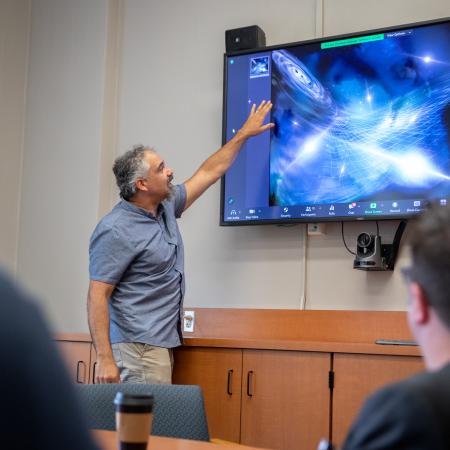Gravitational waves, ripples in the fabric of time-space predicted by Albert Einstein more than a century ago, are permeating the universe at low frequencies, according to a multiyear National Science Foundation project led by Oregon State University scientists.
The findings appear in a collection of four papers authored by researchers from the NANOGrav Physics Frontier Center co-directed by Xavier Siemens, professor of physics in the OSU College of Science.
Evidence of the gravitational waves, whose oscillations are measured in years and decades, was published today in The Astrophysical Journal Letters.
“In the constant quest to advance human knowledge and understanding, this is a really important step along the journey,” Siemens said.
NANOGrav, which stands for North American Nanohertz Observatory for Gravitational Waves, is an international collaboration of nearly 200 astrophysics researchers whose mission is using radio pulsar timing to search for low-frequency gravitational waves.
Detecting a “chorus” of low-frequency gravitational waves, as NANOGrav has done, is a key to unlocking the mysteries of how structures are formed in the cosmos, said OSU astrophysicist Jeff Hazboun.
“We’ve opened up this new area of the spectrum for gravitational waves,” Hazboun said. “We’ve seen low-frequency waves, from a completely different part of the spectrum, which tells us that they’re a ubiquitous physical phenomenon and that we can look for them anywhere.”
Gravitational waves were first observed in 2015 by the Laser Interferometer Gravitational-Wave Observatory, or LIGO.
The discovery of those waves, with frequencies of around 100 cycles per second, was a milestone event in physics and astronomy. It confirmed one of the main predictions of Einstein’s theory of relativity and earned a Nobel Prize in Physics for LIGO’s founders.
Pulsars are the rapidly spinning remains of massive stars that exploded as supernovas. They send out pulses of radio waves with extreme regularity, and a group of them is known as a pulsar timing array, or PTA.
Sixty-eight pulsars were used in gathering evidence that the Milky Way galaxy is awash in a sea of low-frequency gravitational waves, Siemens said.
Einstein’s 1915 theory of general relativity predicted how gravitational waves should affect pulsar signals: By stretching and squeezing the fabric of time-space, gravitational waves should alter the timing of each pulse in a predictable way, delaying some pulses while speeding up others.
“The large number of pulsars used in the NANOGrav analysis has enabled us to see what we think are the first signs of the correlation pattern predicted by general relativity,” Siemens said. “We can use those pulsars as clocks spread out through the sky, and we can see how the ticking of the clocks changes from gravitational waves passing through our galaxy.”
NANOGrav began in 2007 and eight years later launched as a Physics Frontier Center with a $14.5 million grant from the National Science Foundation when Siemens was at the University of Wisconsin-Milwaukee.
Siemens joined OSU in 2019 and two years later the NSF awarded NANOGrav an additional $17 million over five years to search for gravitational wave signals with the Green Bank Telescope in West Virginia, the Very Large Array in New Mexico and the Arecibo Observatory in Puerto Rico.
Siemens said OSU receives about $600,000 annually in NANOGrav funding, with data analysis being Oregon State’s primary role in addition to project leadership and administration.
Co-directed by Maura McLaughlin, an astronomer at West Virginia University, NANOGrav combines the efforts of researchers at 18 universities, including approximately 20 graduate and undergraduate students at Oregon State.
“Searching for gravitational waves is like putting together a puzzle: Everyone has their own piece but they all fit together,” said Phia Morton of Bend, a senior majoring in applied physics and nuclear engineering. “It is a common misconception that scientific breakthroughs come from a lone genius. On the contrary, large-scale science projects require enormous amounts of collaboration and for everyone involved to believe in the goals of the group.”
Morton and other OSU undergraduates contribute by searching for new pulsars to add to NANOGrav’s array; the more pulsars at its disposal, the more sensitive the gravitational wave detection can be, she explains.
“Pulsars are actually very faint radio sources, so we require thousands of hours a year on the world’s largest telescopes to carry out this experiment,” McLaughlin said. “These results are made possible through the National Science Foundation’s continued commitment to these exceptionally sensitive radio observatories.”
Researchers with LIGO, also an NSF-funded international collaboration, in 2015 detected gravitational waves produced by the collision of two black holes using the twin LIGO interferometers in Livingston, Louisiana, and Hanford, Washington.
The gravitational waves that can be observed by LIGO, created by those types of “black hole binaries,” have frequencies of about 100 hertz, Hazboun said.
“NANOgrav searches for gravitational waves with frequencies 11 orders of magnitude below those LIGO is detecting,” he said.
Siemens explains that using a PTA to detect a chorus of gravitational wave signals from multiple super-massive black hole mergers – described as a stochastic background of gravitational waves – holds more promise for understanding the universe than detecting a single wave from a single black hole binary collision.
“Each signal is like a note, and we’re not just after one of these notes – we want to hear the whole choir,” he said. “We want to hear the collective chorus of all of the super-massive black hole binaries that are merging in the universe.”
Super-massive black holes are the biggest type of black holes, millions to billions of times the mass of the sun, and they reside in the centers of galaxies.
NANOGrav researchers say future studies of the signals super-massive black holes send out will enable scientists to view the gravitational wave universe through a new window, offering insight into titanic black holes merging in the centers of distant galaxies and potentially into other exotic sources of low-frequency gravitational waves.
“This is just the beginning of our work,” Siemens said.
Story published in the OSU newsroom.
